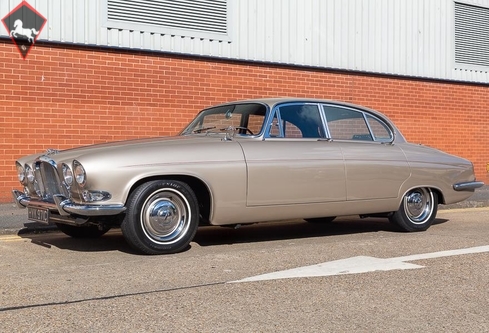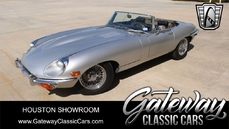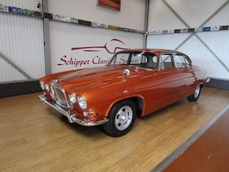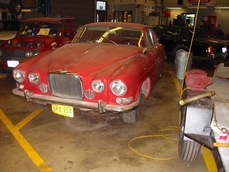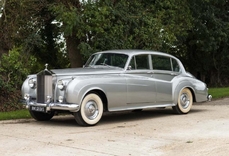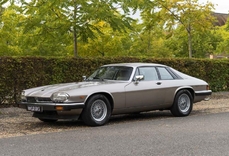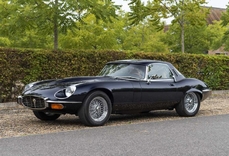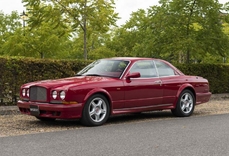Jaguar MK X X 4.2 Concours Winner (LHD) 4.2 1965
General description :
World-class example
Unique opportunity to own the World’s best MK X
Multiple Concours d’Elegance winner
Undoubtedly the finest example available anywhere
Better-than-new restoration
One of the finest restorations we have seen on any car
Opalescent Golden Sand with Black hide to original specification
Front and rear factory Air Conditioning
North America Jaguar Car Club Concours d’Elegance (Best Jaguar)
The Queens English Woodley Park (Best of British vehicles)
North America Jaguar Car Club Champion Division (Best Jaguar 2004)
North America Jaguar Car Club Champion Division (Best Jaguar 2005)
The Presidents choice at the Central Coast British Car Club (1st)
Del Mar Classic Concours d’Elegance (2nd)
Jaguar Southwest regional Concours d’Elegance (Winner)
16th Annual T.O Car Classic Concours (Best in Class )
1965 Jaguar Mark X 4.2 Concours d’Elegance Winner (LHD)
‘Undoubtedly the biggest surprise which this new Jaguar gives on taking the wheel for the first time concerns the matter of size. Its beautiful sweeping lines seen from the outside, and its spacious and luxurious interior sampled from within, both suggest the large car that it really is … yet it does not feel a large car to drive. The finger-light controls, the good forward vision and, above all, the taut “oneness” about the whole car all combine to place a driver immediately at ease.’ – Motor magazine on the Jaguar Mark X.
Launched in October 1961, the Jaguar Mark X had been developed to suit the North American market and was a large car by European standards. It was also technically more advanced than preceding Jaguar saloons and featured independent rear suspension similar to that of the E-Type sports car. The same unit as that fitted to the contemporary E-Type, its engine was the tried-and-tested 3.8-litre XK six producing 265bhp on triple SU carburetors, and for a car weighing around two tons, the 120mph Mark X was impressively quick, though inevitably the weight took its toll of the fuel consumption. The interior, like that of all Jaguar saloons, was exceptionally well appointed and comfortable, and the Mark X came with power-assisted steering as standard. By the time the face-lifted 420G version came along in 1966, the Mark X was being built with the 4.2-litre engine and (optional) all-synchromesh gearbox while incorporating numerous other improvements.
Exquisitely finished in Opalescent Golden Sand coachwork with Black hide, Burgundy hand painted single coach line and sitting on correct period Dunlop SP40 tyres on steel pressed road wheels with gleaming chrome wheel trims.
Build completion at Browns Lane Coventry was on the 24th December 1965, this MK X was one of the very first to be fitted with the uprated 4.2 Litre engine, making this incredible car one of the last of the line Mark X before the new 420G was introduced the following year. As per the Jaguar ‘ heritage ‘ certificate, the car’s first owner was Mr. Karl Bauer, supplied via Jaguar cars New York, fitted from new with the highly desirable automatic gearbox and front, and rear air conditioning.
Subjected to a nut and bolt Concours restoration which today would cost circa £300,000 to duplicate the standard of workmanship. (In 40 years in the industry we have not seen a better restored car). Since completion, the car has entered into the world of Concours where it’s awards say 1000 words of its beauty.
Accolades awarded include:-
Offered here in its outstanding original colour combination, this Jaguar 4.2 Litre Mark X is a truly World-Class example and it is definitely the most attractive example available anywhere on the planet.
DD Classics are proud to own this spectacular period Jaguar and the car is currently diplsyed in our Brentford showroom.
https://ddclassics.com/car-listing/jaguar-mark-x-4-2-lhd/
1965 Jaguar MK X X 4.2 Concours Winner (LHD) 4.2 is listed sold on ClassicDigest in Surrey by DD Classics for £89950.
Car Facts
Car type : Car Make : Jaguar Model : MK X Model Version : X 4.2 Concours Winner (LHD) 4.2 Engine size : 4.2 Model Year : 1965 Sub type : Sedan Location : Surrey
Sold
Seller Information
Sold
People who viewed this Jaguar MK X also viewed similar Jaguar listed at ClassicDigest
Other cars listed for sale by this dealer
About Jaguar
Ah, the story of Jaguar, from its early days as the SS Cars Ltd. to its pinnacle with the D-type, and the street-going evolution in the form of the iconic E-type. There's something quintessentially British about this tale, and I'll narrate it as a British journalist might.In the Beginnings:
Our journey into the world of Jaguar begins in the 1930s, when a company known as SS Cars Ltd. emerged. Despite the unfortunate coincidence of their initials with the rising political tensions in Europe, they started producing stylish and performance-oriented cars. The SS 100, introduced in 1936, was a symbol of elegance and speed, setting the stage for what would become Jaguar.
The Birth of Jaguar:
As the shadows of World War II loomed, SS Cars Ltd. wisely decided to disassociate themselves from the SS initials. Thus, in 1945, they officially became Jaguar Cars Ltd., a name that would soon be synonymous with British luxury and performance.
The XK Series:
Jaguar's post-war era brought us the XK 120, a true sensation in 1948. With its sleek design and a powerful 3.4-liter inline-six engine, it became the world's fastest production car. The XK 120 was the blueprint for what lay ahead – Jaguars that blended style with speed in a uniquely British fashion.
The D-type Dominance:
Then came the D-type, a true racing legend. Introduced in 1954, it won Le Mans three times in the 1950s, showcasing Jaguar's engineering prowess. With its innovative monocoque construction and the iconic fin at the back, the D-type was the apex of Jaguar's motorsport success.
The E-type Emergence:
But the true turning point arrived in 1961 with the introduction of the E-type, often described by Enzo Ferrari as "the most beautiful car ever made." Its long bonnet, curvaceous body, and a 3.8-liter engine delivering exhilarating performance made it an instant classic. The E-type was not just a car; it was a work of art on wheels, and it could hit 150 mph on the road.
Street and Racing Success:
The E-type's beauty was matched by its capability on the track. The lightweight E-types were particularly successful in various racing events, cementing Jaguar's reputation as a force to be reckoned with in motorsport.
The Age of Refinement:
As we delve deeper into the Jaguar story, we find that the 1950s and 1960s were an age of refinement and expansion. Alongside the magnificent D-type and the E-type's iconic emergence, Jaguar introduced models that further solidified its reputation for luxury and performance.
The MK2:
In the late 1950s, Jaguar unveiled the MK2, a sports sedan that combined elegance with power. This sleek four-door saloon was a favorite of bank robbers and law enforcement alike, thanks to its exceptional speed and handling. The MK2 was a symbol of Jaguar's ability to blend sophistication with performance and had a successful racing career as well.
The XJ6:
Fast forward to 1968, and Jaguar launched a car that would define luxury saloons for decades to come – the XJ6. It was a masterpiece of engineering and design, featuring a smooth inline-six engine, independent rear suspension, and a spacious, beautifully appointed interior. The XJ6 was a symbol of British elegance and provided a ride so smooth that it seemed to glide over the road. It became the flagship model for Jaguar and set the standard for luxury saloons, showcasing a level of refinement that left competitors in awe.
The Blend of Classic and Modern:
While the MK2 and XJ6 represented the evolution of Jaguar's saloon cars, they maintained the brand's commitment to performance and luxury. These cars didn't just belong on the racetrack; they were equally at home cruising down the grand boulevards or gliding through the English countryside.
The Challenges of Change:
However, as the 1970s arrived, Jaguar, like many British automakers, faced financial challenges and changes in ownership. The British Leyland era brought both opportunities and struggles, as the brand navigated through various mergers and transitions.
Nevertheless, the legacy of the MK2 and XJ6, along with the D-type and E-type, continues to define Jaguar as a manufacturer that combines timeless elegance with a spirit of performance. These classic models, whether driven on winding roads or parked as collectors' treasures, serve as a testament to Jaguar's enduring presence in the world of automotive excellence.
The Jaguar story, from its early days as SS Cars Ltd. to the creation of automotive icons like the E-type, MK2, and XJ6, is a journey that reflects the very essence of British motoring – a blend of luxury, power, and style that continues to captivate enthusiasts and connoisseurs alike.
